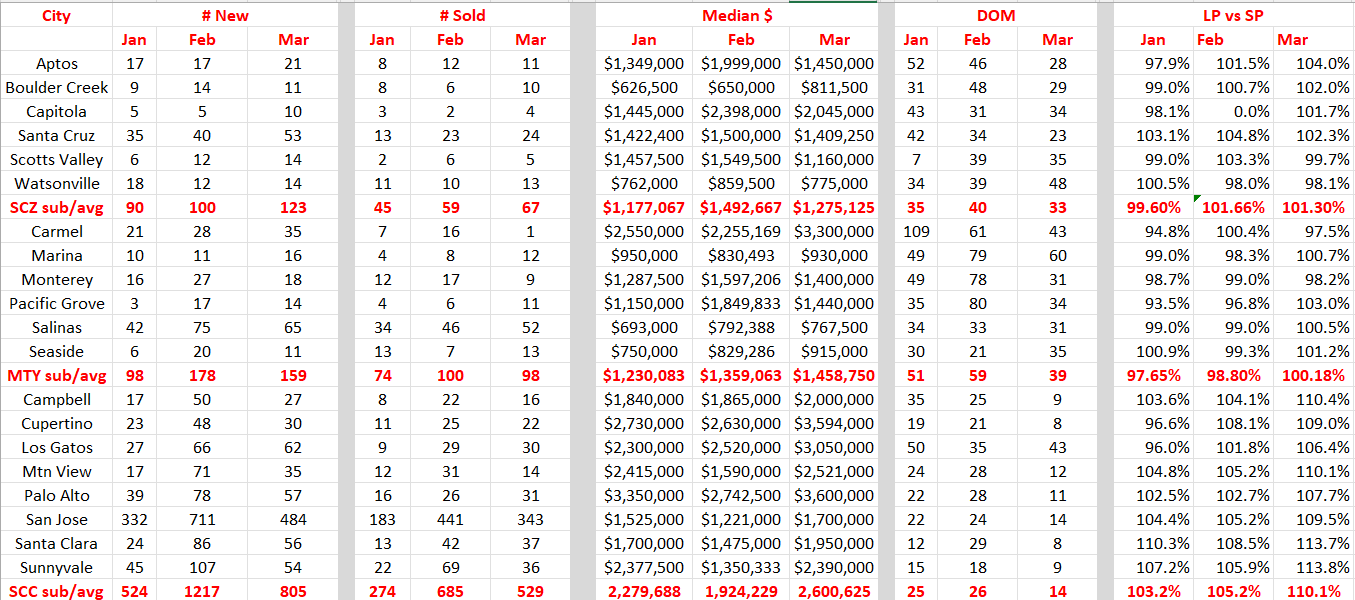
APRIL 2024

90% of homebuyers opt to work with a REALTOR®
As reported by Fortune magazine, Last month, the National Association of Realtors announced a settlement that would resolve nationwide litigation over claims from home sellers related to broker commissions. The $418 million settlement, and the practice changes it will usher in, have led some to speculate that real estate agents are at risk of becoming obsolete. As someone who has practiced real estate for 15 years, nothing could be further from the truth. Members of the National Association of Realtors will continue to be the most reliable partner for the millions of Americans striving to realize the American dream through homeownership. Specifically, the settlement will prohibit offers of compensation from being shared on multiple listing services (MLSs), the databases that show real estate brokers the properties for sale, and it will require MLS participants to enter into written agreements with their buyers. These changes will go into effect in mid-late July 2024.
It's important to note that the National Association of Realtors does not set commissions, and nothing in this proposed settlement would change that. Commissions would continue to be negotiable among buyers, sellers, and their brokers. The "cooperative compensation" rule that has been subject to litigation says that selling brokers have to specify on each listing an offer of compensation to buyers' brokers. That offer could be any amount, even zero. Consumers continue to have options when it comes to compensating the brokers they work with. Some consumers may opt to pay a fixed fee for their broker's services. In other cases, a seller may offer a concession on the sales price, which could be used by the buyer to help compensate their broker. And in other cases, listing agents may offer a portion of their compensation to buyers' agents as long as the offer of compensation does not occur on an MLS.
Cooperative compensation, where the compensation a seller pays to their broker is shared, covering the cost of a buyer broker's services, will continue to be an important option for consumers in all transactions and especially those involving lower and middle-income homebuyers, who may already have a difficult-enough time saving for a down payment. The bottom line is that consumers will continue to be able to choose what kind of professional real estate advice they'd like-and how much, and how, they will pay for the work of a real estate professional.
Historically, nearly 90% of homebuyers have opted to work with a real estate agent or broker. That figure is unlikely to change. Even in an era where seemingly everything can be researched and purchased electronically, the clear value added by realtors remains evident. Nine in 10 home buyers would use their agent again or recommend their agent to others. Agents and brokers demystify local markets and neighborhoods and provide access to extensive information about available homes. We help prospective buyers determine realistic budgets and research varied financing options, including programs that may be able to help buyers with a down payment. Seasoned agents and brokers also offer insights into property values, taxes, regulations, and zoning laws while overseeing thorough due diligence processes. And we connect buyers and sellers with other reputable real estate-related professionals such as lawyers, lenders, contractors, and inspectors-any of which can make or break a transaction.
When it comes time to make or evaluate offers, real estate professionals have a decades-long track record as skilled negotiators, ensuring that their clients submit the most competitive bids for their dream home-or hold out for what their home is really worth. And at the settlement table, we help our clients confidently close on what is likely the most significant financial transaction of their lives. Even post-sale, real estate agents and brokers are crucial advisors for their clients, providing ongoing support, answering queries, and offering guidance as people confront the challenges and delights of homeownership.
NAR's proposed settlement agreement and the associated practice changes will not change what makes realtors valuable: specialized knowledge, diligence, and a commitment to our clients' best interests. And it does not change the fact that millions of people will continue to rely on us to help them fulfill their dream of homeownership. This article spells out the truth and I hope clarifies what you may or may not have been hearing on TV and reading online. If you have any questions, please contact me.
These 3 SoCal metros just saw a jump in home values.
The housing market is in flux, as per usual, but there's some positive news for Riverside, Los Angeles, and San Diego County homeowners: home values are on the rise. According to a January 2024 market report by Zillow, there was a significant jump in most of the 50 largest metro areas in the country-most notably, annual price gains were highest in San Diego (9.6%) and Los Angeles (7.4%). There were also month-over-month increases in a few major metro areas, too, with the biggest in Riverside (0.2%) and San Diego (0.1%). New York, Las Vegas, and Miami rounded out the list.
So, what does it all mean for Southern California homeowners? If you're thinking about selling your home in San Diego, Los Angeles, or Riverside, you should be able to add a heftier price tag to it. The numbers in the report also prove that more people are taking the plunge and putting their homes on the market, with the number of new listings increasing by 5.8% nationwide compared to last year. That's still lower than pre-pandemic numbers, but it's a promising sign for potential sellers.
The number of homes that have sold over list price has also increased across the country, but there were particularly high numbers for three California metros: San Jose (33.8%), San Francisco (14.3%), and Los Angeles (14.3%). The only three metros with a decrease in home values year-over-year were in New Orleans, Austin, and San Antonio. As for month-over-month, the largest drop in home values were in New Orleans, Minneapolis, Buffalo, Cleveland, and Pittsburgh.
California is building fewer homes, sadly this means higher prices.
Across California and the nation, developers moved to start fewer homes in 2023, a decline some experts say could eventually send home prices and rents even higher as supply shortages worsen. Developers cite several reasons for delaying new projects, including high labor and material costs, as well as new local regulations that together make it harder to turn a profit.
Perhaps the biggest factor - and one hitting across the country - is the high cost of borrowing. Rising interest rates not only make it more expensive for Americans to buy a home, but they also add additional costs for developers who must shell out more money to build and manage their projects. Preliminary data from the U.S. Census Bureau show building permits for new homes fell 7% in California in 2023 compared to the prior year. Drops were recorded in both single-family homes and multifamily homes.
C.A.R. Weekly Market Update
April 1, 2024 - The economy is having a solid growth pace so far in the first quarter with consumers feeling more confident about their financial well-being than last year. Their resilience in spending, however, is keeping inflation from falling and could create a real problem for the Fed in bringing down interest rates in the near term. Other macroeconomic indicators such as the households' purchasing power, on the other hand, suggest that the economy should start pulling back in the near future. As of now, the central bank is still projected to cut rates by 75 bps this year and the first rate-cut is expected to be in June. If the prediction turned out to be true, rates should begin a more sustainable declining trend in May, which should help improve the housing market in the spring home buying season.
Consumer confidence holds steady but short-term outlook slips: Consumers' assessment of the economy and their financial well-being was virtually unchanged in March, as the Conference Board reported a slip of its Consumer Confidence Index by 0.1 points from a downwardly revised 104.8 recorded in February. Consumers, in general, felt more positive about their current situation, but also became more concerned about their future outlook. Lower expectations for the labor market conditions and the consumers' assessment of their income prospect were contributing factors to the increase in pessimism in the consumers' short-term outlook.
Consumer spending surges by the most since January 2023: After pulling back on spending at the start of the year, consumers began to splurge again in February despite borrowing costs remaining elevated. Consumer spending, or personal consumption expenditure, jumped 0.8% month-over-month in February after registering a more moderate 0.2% in January. If consumers continue to spend freely in the service sector, service prices may not ease back in the short term and could post a real problem for the Fed in making their decision on cutting rates.
New home sales eased in February: New home sales in the U.S. came in softer than expected in February, with the number of newly constructed single-family houses sold dipping 0.3% month-over-month but gaining 5.9% year-over-year. The uptick in mortgage rates in February and a bounce back in inventory in the resale market might have curtailed sales in the new housing market in the latest report. Declines in new home prices could be attributed to multiple factors. Builders' willingness to reduce prices as construction costs dipped and developers releasing more smaller and affordable units in recent months are two main reasons that may offer some explanations.
Residential construction spending continues to rise in February: Higher interest rates might have weighed on overall construction spending, but residential construction spending remained on an upward trend in February. Total construction spending in the second month of the year dropped 0.3% from the prior month, primarily due to nonresidential spending falling 1.0% as private and public categories weakened. Single-family outlays, on the other hand, increased again for the third straight month, with spending for single-family units rising 1.4% month-over-month and 17.2% year-over-year. Multifamily spending dipped from the prior month by 0.2% as vacancy rate continued to climb and rent growth softened further.
Mortgage delinquency rate remains flat from last year: Mortgage delinquency at the national level was unchanged and remained near an all-time low in January, according to the latest Loan Performance Insights released by CoreLogic. Mortgage borrowers who were late in making their payments by 30 days or more accounted for 2.8% of all outstanding mortgages in the first month of the year, flat from the same level recorded 12 months ago. Twelve states reported year-over-year increases in overall delinquency rates, while 19 states' rates remained.

New Company, New Venture, New Digs
I am pleased to announce that after many years of professionally serving clients on my own as an independent broker, I have established a new company and added a new agent. I have always told many agents I know that if they ever want to join me just ask. Well finally someone did and by doing so I was finally encouraged into opening a brokerage. WELCOME "Coastal Dream Realty" and WELCOME "Erica Pittman". We look forward to doing business together and growing in size.
March and 1st Qtr statistics for Santa Cruz, Monterey & the Bay Area
Comments: March ended up being a surprise to many of us. Santa Cruz proved you can drop prices, negotiate and listings and sales will increase. The opposite is true in both Monterey and Santa Clara counties. Santa Clara County new listings overall dropped 33% and sales dropped 22%. This is not normal for this time of year as spring always brings increases. The only increase was in prices for these two counties. Days on the market dropped significantly across all three counties. The list to sales price ratio only significantly changed in Santa Clara County where it increased 5% over last month. I used to be able to predict the market much better. We are in very changing and interesting times. (Display of MLS data is deemed reliable but is not guaranteed accurate by the MLS)


